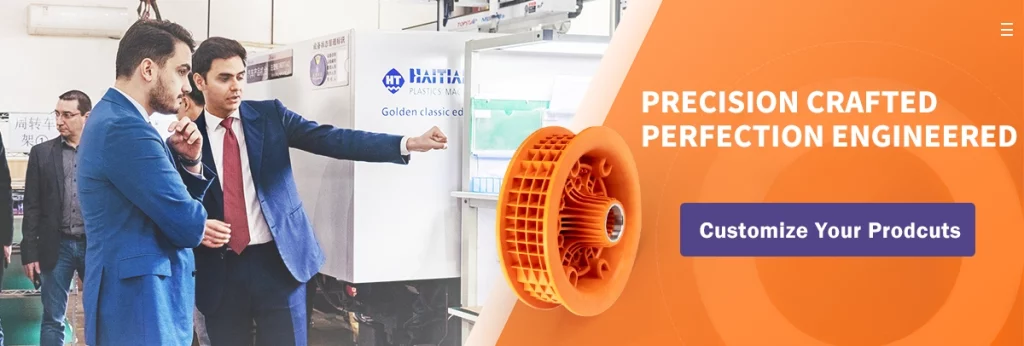Despite its high cost and intricate processing challenges, beryllium copper has found its way into the heart of plastic mold manufacturing. Historically, clients would resort to this material only when absolutely necessary. However, a rising injection molding trend has emerged, with more and more mold manufacturers opting for beryllium copper. Why this sudden shift in preference? Let’s explore the exceptional attributes of beryllium copper injection molds and uncover the reasons behind their growing popularity in the industry.
The Superior Traits of Beryllium Copper in Injection Molding
1. Exceptional Hardness and Strength
Beryllium copper stands out for its remarkable hardness and strength. After numerous tests, engineers have been able to pinpoint the optimal conditions for the precipitation hardening of beryllium copper alloys. This discovery paved the way for its formal introduction into the market. Before its application in plastic molds, beryllium copper underwent several iterative tests to determine its best physical and chemical properties for manufacturing and processing. It’s proven, both theoretically and practically, that when the hardness of beryllium copper reaches HRC36-42, it meets the requirements for plastic mold manufacturing. This includes desired hardness, strength, high thermal conductivity, ease of machining, extended mold lifespan, and a reduction in the development and production cycle.
2. Superior Thermal Conductivity
The thermal properties of beryllium copper molds are advantageous for controlling the temperature during plastic processing. This not only facilitates the control of the molding cycle but also ensures uniform mold wall temperature. When compared to steel molds, beryllium copper molds have a significantly shorter molding cycle, reducing the average mold temperature by about 20%. In situations where there’s a minimal difference between the average demolding temperature and the average mold wall temperature (like when mold parts are hard to cool), using beryllium copper can cut down cooling time by 40%, with only a 15% reduction in mold wall temperature. These attributes bring several benefits to mold manufacturers, including shortened molding cycles, increased production rates, improved product quality due to uniform mold wall temperatures, simplified mold structures due to fewer cooling channels, and the ability to raise material temperatures, thereby reducing product wall thickness and costs.
3. Extended Mold Lifespan
Considering the cost of molds and the continuity of production, the anticipated lifespan of a mold is crucial for manufacturers. Given that beryllium copper’s strength and hardness meet the required standards, its insensitivity to temperature stress can significantly enhance the mold’s lifespan. Before deciding on beryllium copper as the mold material, factors like its yield strength, modulus of elasticity, thermal conductivity, and thermal expansion coefficient must be considered. Beryllium copper’s resistance to thermal stress far surpasses that of mold steel, making its longevity noteworthy.
4. High Thermal Penetration Rate
Beyond its thermal conductivity, the thermal penetration rate of the mold material plays a vital role in the quality of plastic products. Using beryllium copper molds can eliminate overheating traces. If the thermal penetration rate is low, the contact temperature in the distant areas of the mold wall will be higher, leading to a greater temperature difference in the mold. In extreme cases, this can result in temperature variations, extending from shrinkage marks on one end of the plastic product to overheating traces on the other.
5. Exquisite Surface Quality
Beryllium copper is highly suitable for precision surface processing. It can undergo direct electroplating, boasting excellent adhesion properties. Additionally, polishing beryllium copper is a straightforward process, ensuring molds that not only function efficiently but also look pristine.

Repairing and Welding Considerations for Beryllium Copper Molds
Welding and Repairing Beryllium Copper
Beryllium copper, while being a premium material for injection molds, can be efficiently repaired through welding. However, the purity requirements for this process are stringent. The welding position, welding rods, and inert gases all have specific criteria that need to be met. For instance, if the thickness of the welding cavity exceeds 3mm, it’s essential to preheat the component to 200°C.
Safety Precautions During Welding
One crucial aspect to note is that the smoke produced during the welding of beryllium copper is toxic. Therefore, it’s imperative to disperse this smoke promptly to ensure a safe working environment. For manual arc welding, the welding rod materials typically consist of two elements: aluminum and copper.
Advanced Welding Techniques
For the welding joint, tungsten inert gas (TIG) welding is recommended. Another viable method involves using metal wire inlays. Generally, alternating current TIG welding is advised, as this technique yields superior welding results. It ensures that the inlay and the base material merge seamlessly without the need for additional flux.
Post-Welding Considerations
A vital point to remember post-repair is that the welded component should not undergo further hardening heat treatments or solution treatments. This is to preserve the integrity and properties of the beryllium copper mold.










